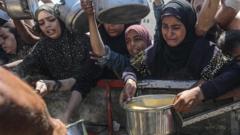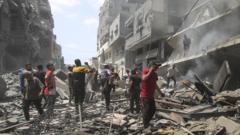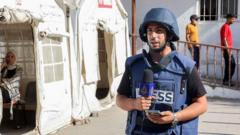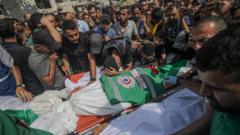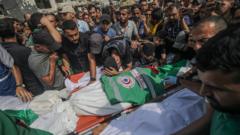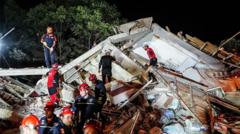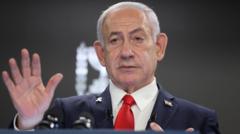Iran's capital Tehran is in turmoil as its citizens confront the aftermath of Israeli airstrikes targeting military and nuclear facilities, leading to widespread panic and confusion.
Tehran Residents Face Despair After Israeli Airstrikes

Tehran Residents Face Despair After Israeli Airstrikes
Escalating Conflict: Iranians Brace for Uncertainty Following Devastating Attacks
In the early hours of June 13, 2025, residents of Tehran awoke to a grim reality after a night marked by explosive violence, as Israeli fighter jets launched multiple airstrikes across the Iranian capital. The assaults specifically targeted key military and nuclear sites, sending shockwaves through the populace and resulting in significant chaos.
Long lines quickly formed at gas stations, while grocery stores began to fill up as Iranians prepared for an uncertain and potentially perilous future. As of Friday morning, Iranian officials had yet to provide a complete account of the casualties, indicating that several civilians, including children, were among the dead, with dozens more injured.
Significant locations struck included the Natanz nuclear facility—an essential site for Iran’s nuclear program—located near Isfahan, as well as the Parchin military base near Karaj. Reports suggest that numerous military bases, missile depots, and nuclear research centers in cities across Iran were also hit, intensifying fears of further escalation.
Eyewitness accounts and local media documented that the strikes affected even residential areas, impacting both affluent and working-class neighborhoods within Tehran, prompting citizens to seek safety and answers amid confusion.
Despite the apparent attempts at reassurance from Iranian officials, who previously dismissed warnings about potential strikes as mere propaganda aimed at coercing Iran, the government provided minimal guidance to the public on how to protect themselves from further attacks. No emergency shelters or safety protocols were made available to residents grappling with the aftermath of this unexpected aggression.
Long lines quickly formed at gas stations, while grocery stores began to fill up as Iranians prepared for an uncertain and potentially perilous future. As of Friday morning, Iranian officials had yet to provide a complete account of the casualties, indicating that several civilians, including children, were among the dead, with dozens more injured.
Significant locations struck included the Natanz nuclear facility—an essential site for Iran’s nuclear program—located near Isfahan, as well as the Parchin military base near Karaj. Reports suggest that numerous military bases, missile depots, and nuclear research centers in cities across Iran were also hit, intensifying fears of further escalation.
Eyewitness accounts and local media documented that the strikes affected even residential areas, impacting both affluent and working-class neighborhoods within Tehran, prompting citizens to seek safety and answers amid confusion.
Despite the apparent attempts at reassurance from Iranian officials, who previously dismissed warnings about potential strikes as mere propaganda aimed at coercing Iran, the government provided minimal guidance to the public on how to protect themselves from further attacks. No emergency shelters or safety protocols were made available to residents grappling with the aftermath of this unexpected aggression.



